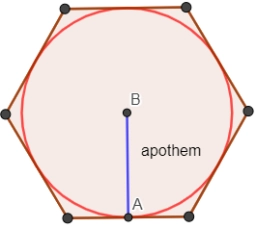Regular polygons
The number of sides of two regular polygons differ by 1. The sum of the interior angles of the polygons is in the ratio of 3:2. Calculate the number of sides of each polygon.
Final Answer:

Tips for related online calculators
Check out our ratio calculator.
Do you have a linear equation or system of equations and are looking for its solution? Or do you have a quadratic equation?
Do you have a linear equation or system of equations and are looking for its solution? Or do you have a quadratic equation?
You need to know the following knowledge to solve this word math problem:
algebraplanimetricsbasic operations and conceptsUnits of physical quantitiesGrade of the word problem
We encourage you to watch this tutorial video on this math problem: video1
Related math problems and questions:
- Regular polygons
 Two regular polygons, x and y, are such that the number of sides of x is three more than the number of the sides of y. If the sum of the exterior angles of x and y is 117°, how many sides have x?
Two regular polygons, x and y, are such that the number of sides of x is three more than the number of the sides of y. If the sum of the exterior angles of x and y is 117°, how many sides have x? - The ratio 21
 The ratio between the number of sides of two regular polygon is 1:2 and ratio of sum of their interior angles is 2:3. Find their number of sides.
The ratio between the number of sides of two regular polygon is 1:2 and ratio of sum of their interior angles is 2:3. Find their number of sides. - Interior angles - sum
 For the sum s of the interior angles of a polygon, where n is the number of its sides, the relation s=(n−2)⋅180 degrees applies. How many sides does a polygon have if the sum of its interior angles is 900°?
For the sum s of the interior angles of a polygon, where n is the number of its sides, the relation s=(n−2)⋅180 degrees applies. How many sides does a polygon have if the sum of its interior angles is 900°? - N-gon angles
 What is the sum of interior angles 8-gon? What is the internal angle of a regular convex 8-polygon?
What is the sum of interior angles 8-gon? What is the internal angle of a regular convex 8-polygon? - 9-gon
 The sum of interior angles of 9-gon is:
The sum of interior angles of 9-gon is: - The interior
 The interior angle of a regular polygon is x. If x is 9° less than the average of 153° and 145°, find the number of sides of the polygon.
The interior angle of a regular polygon is x. If x is 9° less than the average of 153° and 145°, find the number of sides of the polygon. - Two similar 2
 Two similar polygons have corresponding sides 15 inches and 6 inches. If the area of the first is 2700 square inches, what is the area of the second?
Two similar polygons have corresponding sides 15 inches and 6 inches. If the area of the first is 2700 square inches, what is the area of the second?
